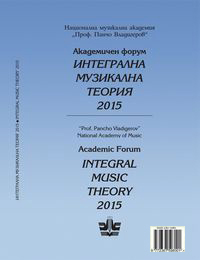The Strictness of Palestrina Style
The Strictness of Palestrina Style
Author(s): Vesela BoyadjievaSubject(s): Fine Arts / Performing Arts, Music, History of Art
Published by: Издателство НМА „Проф. Панчо Владигеров”
Keywords: Palestrina style; strictness; polyphonic texture; sacred music; Josef Fux’s method, cantus firmus; two-part composition; convertible counterpoint; dissonance; cadence; consecutive fifths and octaves;
Summary/Abstract: Strict counterpoint and Palestrina style are interchangeable terms in current usage. Establishing a definition provokes repudiation, because the ‘clearness’ of the techniques in historical and geographical context cannot be guaranteed. There is always a pre-history; a stylistic analogy always exists.The common European system of teaching, based on Josef Fux’s Gradus ad Parnassum, provides the necessary certainty and reliability of the method. The complex understanding of the style as completeness makes us reconsider Fux’s theory, because a mere technical examination of the music risks completely misunderstanding the meaning of the discipline. Remoteness from the text incorrectly places the music in the role of an abstract art. Sacred art, however, is in its essence always symbolic. Two-part composition appears to be the broadest scheme, the skeleton of the strict style that conveys technique but deprives us of this music’s transcendence. The general overview of the problems presented here permits a summary of the cases that both threaten and confirm the strictness of the style.
Journal: Академичен форум »Интегрална музикална теория«
- Issue Year: 2016
- Issue No: 1
- Page Range: 24-37
- Page Count: 14
- Language: English

